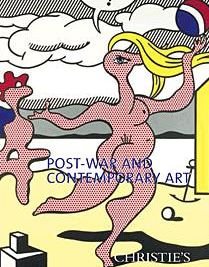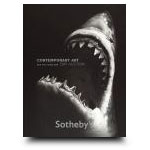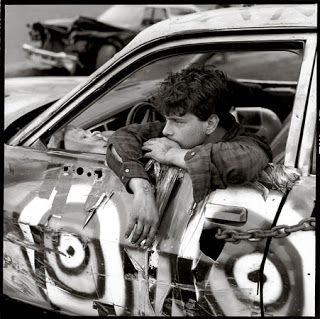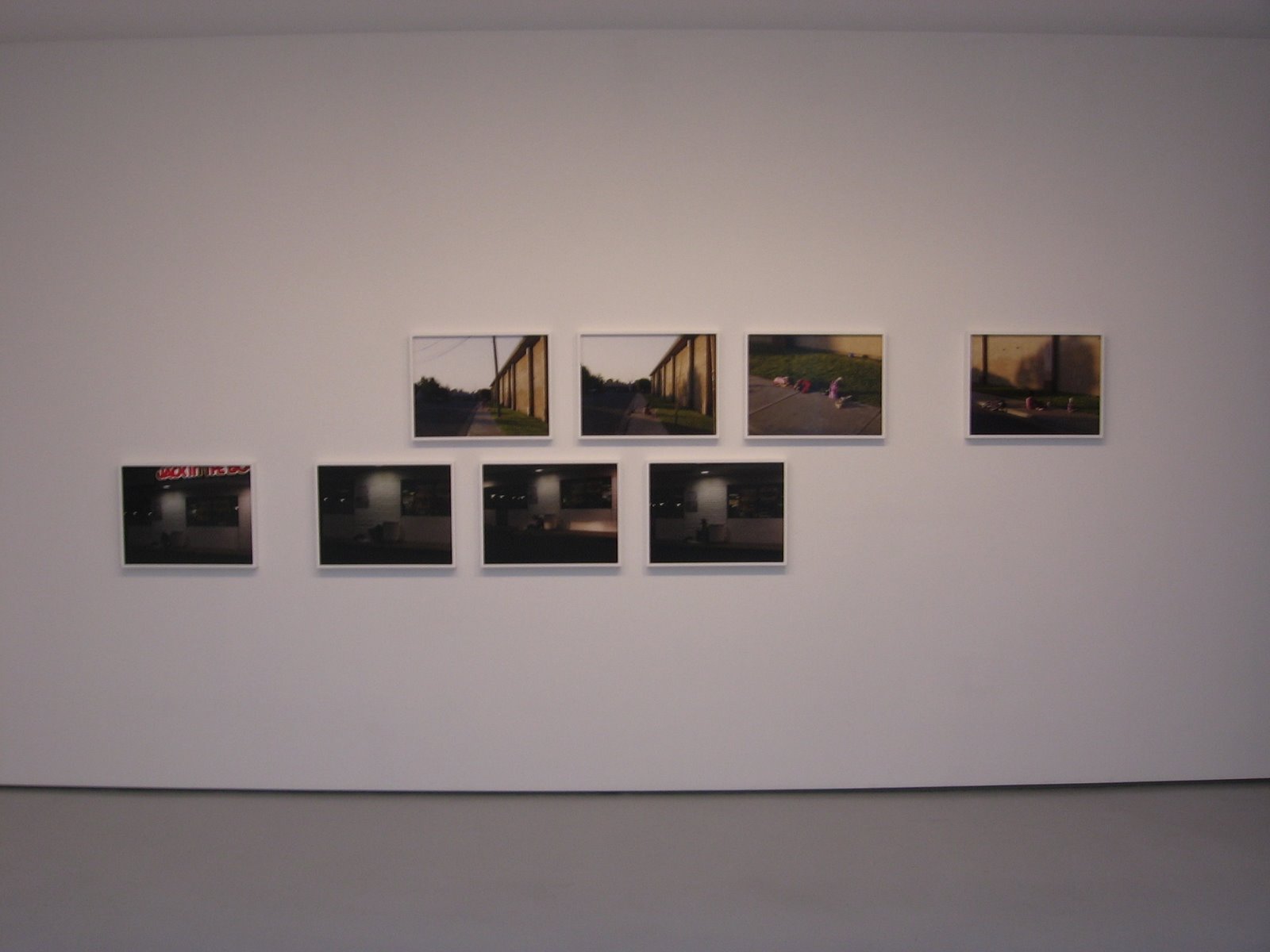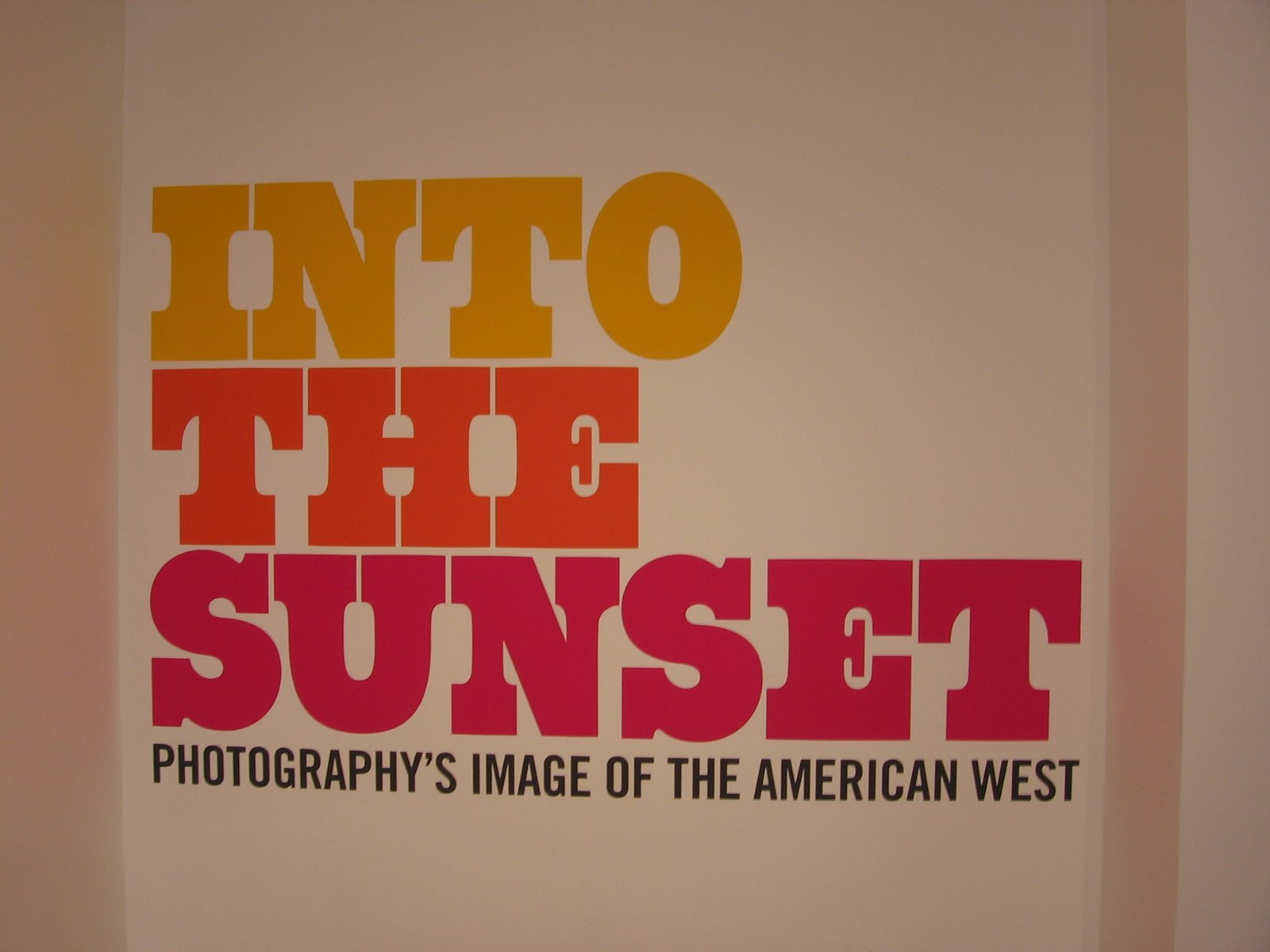JTF (just the facts): A sprawling group exhibit of recent contemporary art from a total of 50 different artists (all under the age of 33), in a variety of mediums, spread across the three floors of the museum. Eleven artists using photography (very broadly defined) have been included (the number of images on view in parentheses):
Cory Arcangel (1)
Tauba Auerbach (2)
Mohamed Bourouissa (3)
Cao Fei (6)
Mariechen Danz (1)
Haris Epaminonda (8)
LaToya Ruby Frazier (5)
Shilpa Gupta (1)
Matt Keegan (grid of 23)
Elad Lassry (9)
Ahmet Öğüt (4)
Comments/Context: Whether due to its catchy title, its biennial-type organization, or its focus on the art of a younger generation, this survey show at the New Museum has gotten a lot of buzz, complete with the resulting coverage by all the major media outlets (many of which are linked below). Regular readers here will know that we are focused on photography, and so our aim in visiting this exhibit was to see what kind of photography being made by artists born around 1980 is getting all the attention. Below, we’ve highlighted some of the work we found most promising.
What comes through time and again in this show, regardless of the artist’s chosen medium, is that this generation is very comfortable with media and technology, having been saturated with imagery and consumer choice their entire lives via the Internet, pop culture, and the multi-ethnic world around them. It is within this ever shifting environment that this cohort has been forced to find meaning, to grapple with finding individual identities in the overwhelming sea of information. For many, this has meant a search inward; for others, a focus on the evolving connections of personal and social networks enabled by technology. As a result, this show of new art is busy with combinations and mashups: cacophonous sound and light, video and paint, both behind and in front of the camera. The mixing here seems altogether natural and authentic, not a fussy conceptual overlay designed to impress.
Mohamed Bourouissa’s powerful color pictures of life in the Paris banlieues are the stand out images for me in this show (installation shot below). They depict the real friction of the mixing cultures and the simmering underlying disaffection in a quasi-documentary (staged) framework, heightened for emotional effect.

The works of Tauba Auerbach (below, top) and Cory Arcangel (below, bottom) both dive deeper into computer and display technology, exploring the edges of how image making can happen armed with these new tools. Auerbach’s pictures are made up of the abstract rainbow hues of pixelated static. Arcangel’s image was made entirely inside Photoshop, with soft gradients of rich abstract color, complete with instructions for reproducing the image in the title. These works signal a splinter direction emerging in photography, where the bleeding edge effects of the technology drive the process, rather than traditional subject matter. We should expect to see more work along these lines in the coming years, as the full boundaries of image making get extended (maybe it isn’t even “photography” anymore), perhaps taking us back to the ideas of the color field painters or abstract expressionists, only in a wholly new format and texture.


Cao Fei’s images of teenagers engaged in cosplay (dressing up in elaborate costumes derived from Japanese manga or virtual immersive environments, below) at first seem overly obvious and careful; we’ve seen plenty of pictures of cleverly staged people in costumes across the history of photography. But after standing in front of them for a while, I started to see more of the misunderstood melancholy, the search for some kind of distinctiveness of spirit against a raging tide of uniformity/conformity. We’re already seeing transformations in our culture in how we develop and maintain “identities” out on the Internet; these pictures are evidence of how the impact of these identities is clashing with the mundane of the everyday.

Finally, LaToya Ruby Frazier’s black and white portraits (below, shown in a very dark room) show that the old techniques still have relevance for a new generation. Her works explore the relationships of her family, with all of its tensions and inter-generational dynamics. They show that new work can indeed be made that addresses the issues of the present, while still relating to the traditions of the past (rather than abandoning them).

The rest of the photography in this show was less inspiring from my point of view; perhaps I just wasn’t moved by the issues it was grappling with. Overall, while there is plenty of visual and audio stimulation in these galleries, the photography is a mixed bag, with a handful of solid bodies of work hiding amidst all the flashing lights, video clips and sampled sounds.
Collector’s POV: While none of the works in this show fits our collection, I came away quite impressed by several of the photographers who are included in this exhibit, particularly Mohamed Bourouissa. More generally, it was good to get a view into new directions that photography may take in the coming years, driven by this younger generation. Nearly all of these artists here have artist websites and some have gallery representation. There is also a large phone book style resource guide for all of the artists, and many, many more who were not included, complete with thumbnail images and contact information, for those who want to follow up.
Rating: * (one star) GOOD (rating system described here)
Transit Hub:
- Print reviews: NY Times (here), New Yorker (here), New York (here) Village Voice (here)
- Online reviews: Art Fag City (here), C-Monster (here), Bloomberg (here)
- Mohamed Bourouissa – Galerie Les Filles du Calvaire (here)
- Tauba Auerbach’s website (here) and at Deitch (here)
- Cory Arcangel’s website (here)
- Cao Fei’s website (here)
- LaToya Ruby Frazier’s website (here)
The Generational: Younger Than Jesus
Through June 14th
The New Museum
235 Bowery Street
New York, NY 10002
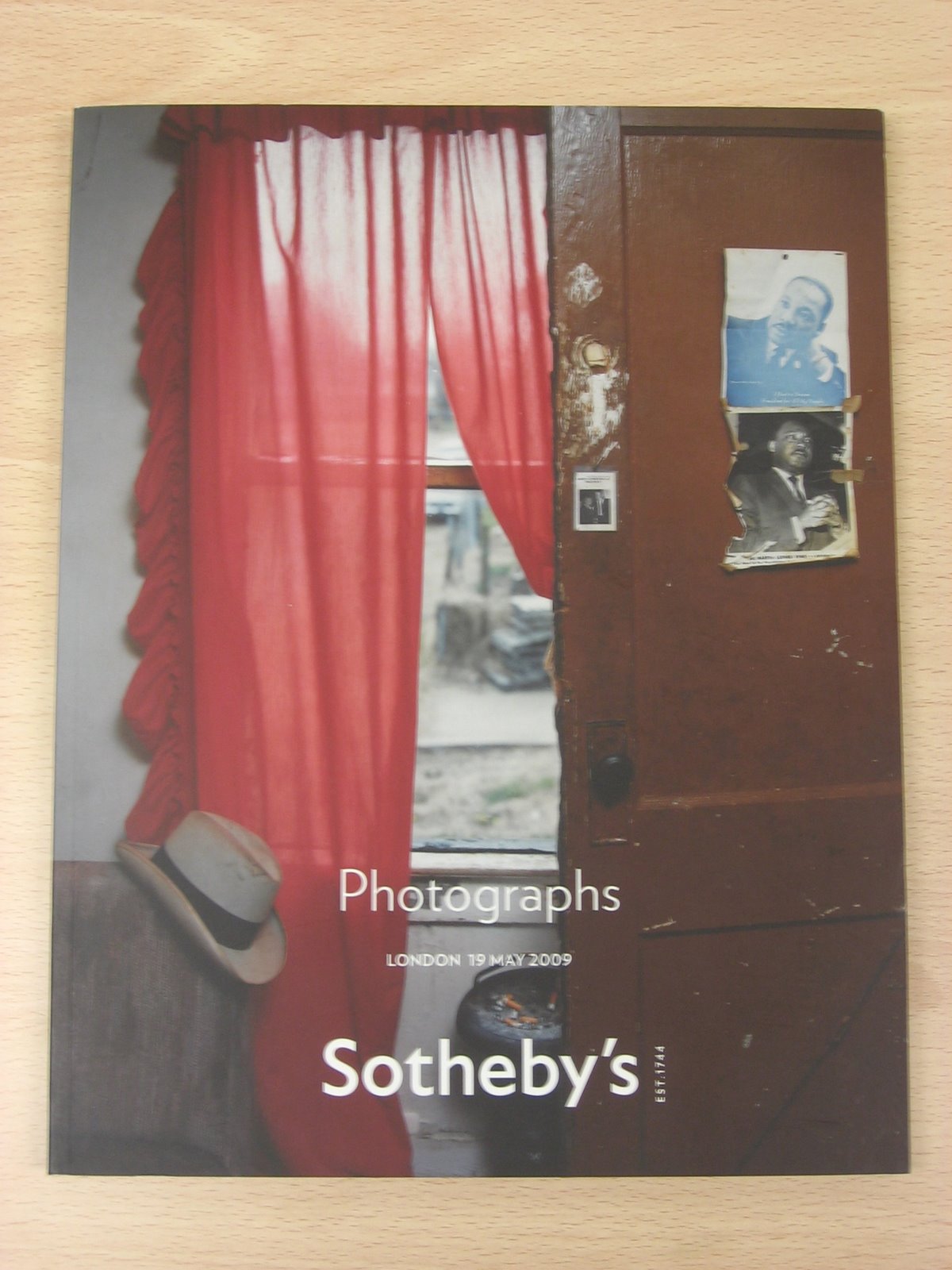
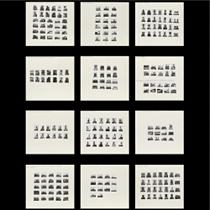



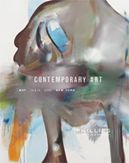 Below is a list of the photographers who are represented by more than one lot in the two sales (with the total number of prints for sale in parentheses):
Below is a list of the photographers who are represented by more than one lot in the two sales (with the total number of prints for sale in parentheses):